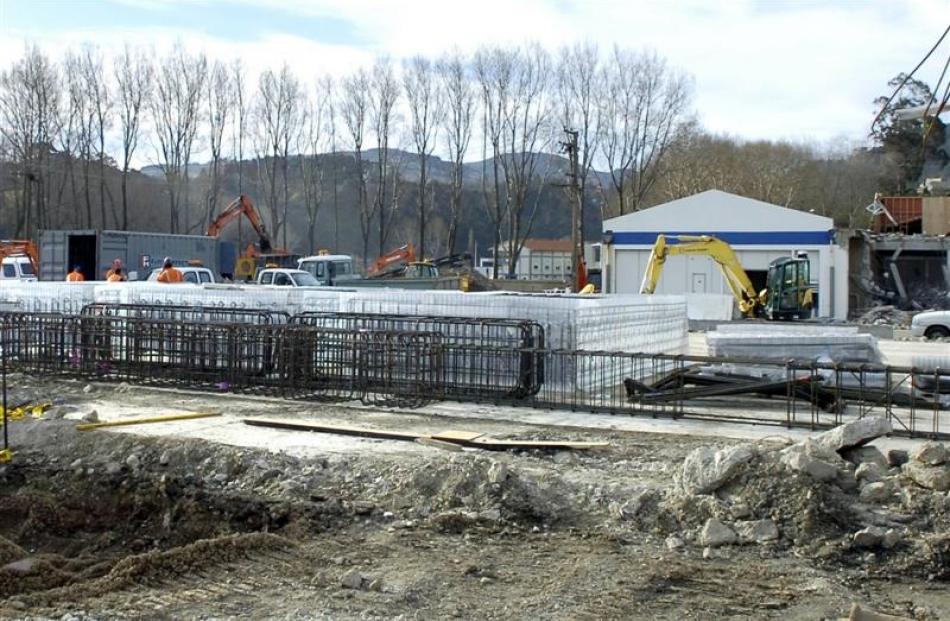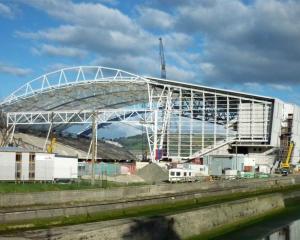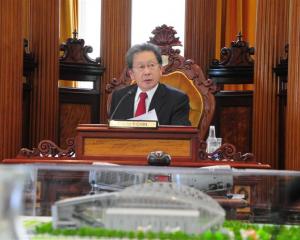Work driving piles into the ground at the Forsyth Barr Stadium site is going ahead successfully, but the most difficult stage of the project, lifting about 700 tonnes of steel roof trusses into place 35m above ground, will be the major challenge of the project.
"It's a difficult job," Hawkins Construction senior site manager Dave James said.
In fact, lifting such a weight so high had never been done in New Zealand before, to Mr James' knowledge.
"It's the first time we've had to lift anything this big this high," he said.
The lift could take up to seven hours, and require two 400-tonne cranes lifting at once, with pinpoint co-ordination between them, on a day with no wind.
"You have to plan the timing of it," Mr James said.
If the wind caught the trusses on the way up, the whole lot could come crashing down.
A visit to the site for an update on construction showed the work moving steadily ahead.
The piles for the south stand have been sunk in a variety of configurations, from single piles to some in groups of three or four, some sunk at angles.
The technique for hammering them into the ground was anything but subtle.
"It [the pile-driver] sits on top and we start smacking it [the pile]," said Mr James, who is from Taranaki and has worked on the Manukau wastewater plant and the America's Cup wharf, in Auckland.
"We can hammer it in like a nail."
Technology played a part: wires from the piles to a laptop provided information on their progress when 56 tonnes came crashing down on top.
Last week, 168 of about 340 piles for the south stand were in place, although more have been sunk since.
With 150-tonne rigs that were "quite temperamental", the number sunk per day could vary from 15 to none, Mr James said.
"So far, we're doing OK."

That was expected, and the research done on the pile depths had proved correct, which was something of a relief, Carisbrook Stadium Trust development director Darren Burden said.
"We would have had cost and time problems if that had not worked; hence the reason we're quite pleased."
The next task was to cap the piles with foundation pads, some triangular and some rectangular, depending on the number of piles in a group, which then provided a base on which to build.
In the meantime, demolition by Hall Bros was still under way, and as much recycling as possible was being done.
The former Fonterra building will be taken apart, transported to Marlborough, and rebuilt there.
At another part of the site, a large machine was crushing concrete, and concrete from an old milk-treatment plant, for instance, would be used as fill on-site.
About 100 people were working on the site, on the piles and the demolition, although 250 had been "inducted", and given safety training.
Numbers would rise to about 500 in six to eight months, when work on the north, west and south stands was under way.
Once they were built, the roof would go up. The east stand would be built last.
Up to 60 people would work on steel-work for the roof, which was being made in Auckland and had to be assembled in Dunedin.
It was expected the roof would be lifted into place in January or February next year.










